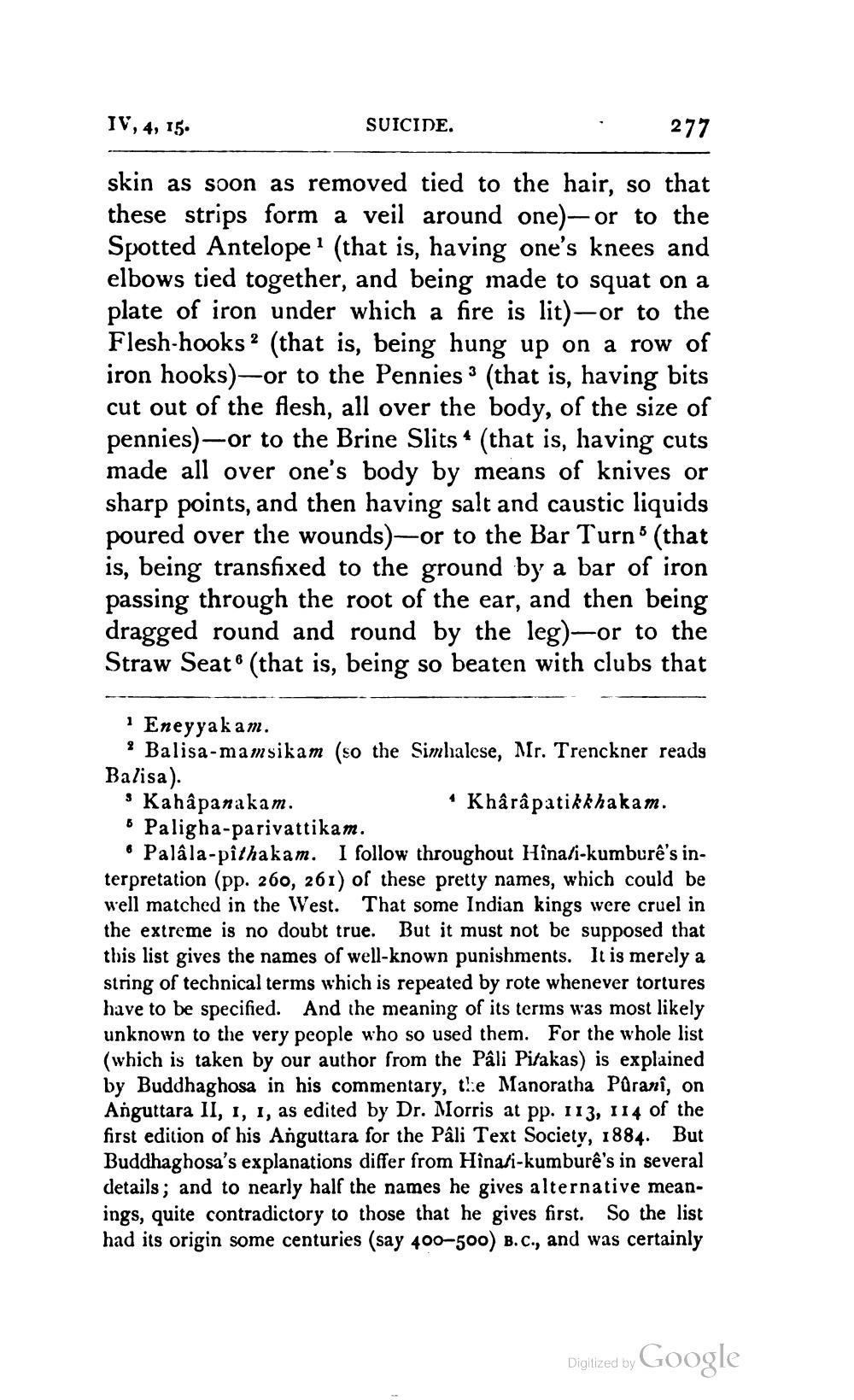________________
IV, 4, 15.
SUICIDE.
·
277
skin as soon as removed tied to the hair, so that these strips form a veil around one)- or to the Spotted Antelope 1 (that is, having one's knees and elbows tied together, and being made to squat on a plate of iron under which a fire is lit)-or to the Flesh-hooks ? (that is, being hung up on a row of iron hooks)-or to the Pennies 3 (that is, having bits cut out of the flesh, all over the body, of the size of pennies)-or to the Brine Slits * (that is, having cuts made all over one's body by means of knives or sharp points, and then having salt and caustic liquids poured over the wounds)-or to the Bar Turn” (that is, being transfixed to the ground by a bar of iron passing through the root of the ear, and then being dragged round and round by the leg)-or to the Straw Seat (that is, being so beaten with clubs that
Eneyya kam.
Balisa-mamsikam (so the Simhalese, Mr. Trenckner reads Balisa). * Kahapanakam.
• Khârâpatikkhakam. Paligha-parivattikam. • Palâla-pithakam. I follow throughout Hînali-kumburê's interpretation (pp. 260, 261) of these pretty names, which could be well matched in the West. That some Indian kings were cruel in the extreme is no doubt true. But it must not be supposed that this list gives the names of well-known punishments. It is merely a string of technical terms which is repeated by rote whenever tortures have to be specified. And the meaning of its terms was most likely unknown to the very people who so used them. For the whole list (which is taken by our author from the Pâli Pitakas) is explained by Buddhaghosa in his commentary, the Manoratha Paranî, on Anguttara II, 1, 1, as edited by Dr. Morris at pp. 113, 114 of the first edition of his Anguttara for the Pâli Text Society, 1884. But Buddhaghosa's explanations differ from Hinati-kumburê's in several details; and to nearly half the names he gives alternative meanings, quite contradictory to those that he gives first. So the list had its origin some centuries (say 400-500) B.C., and was certainly
Diglized by Google




